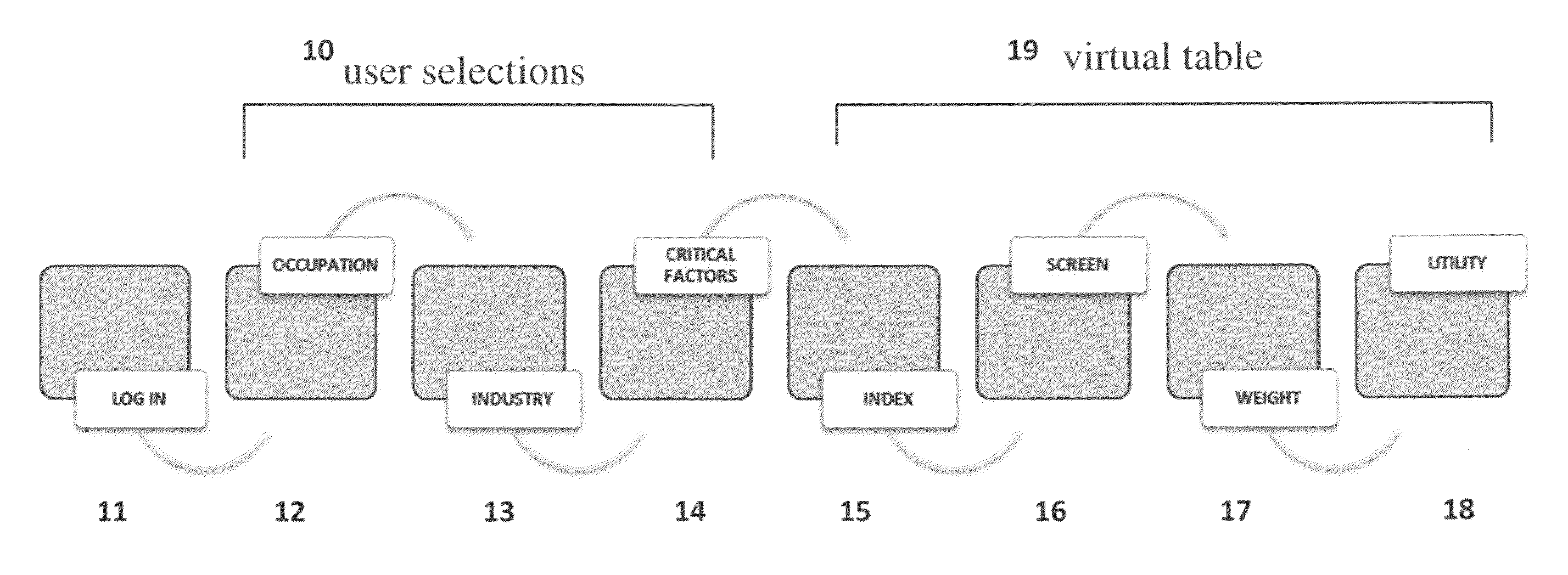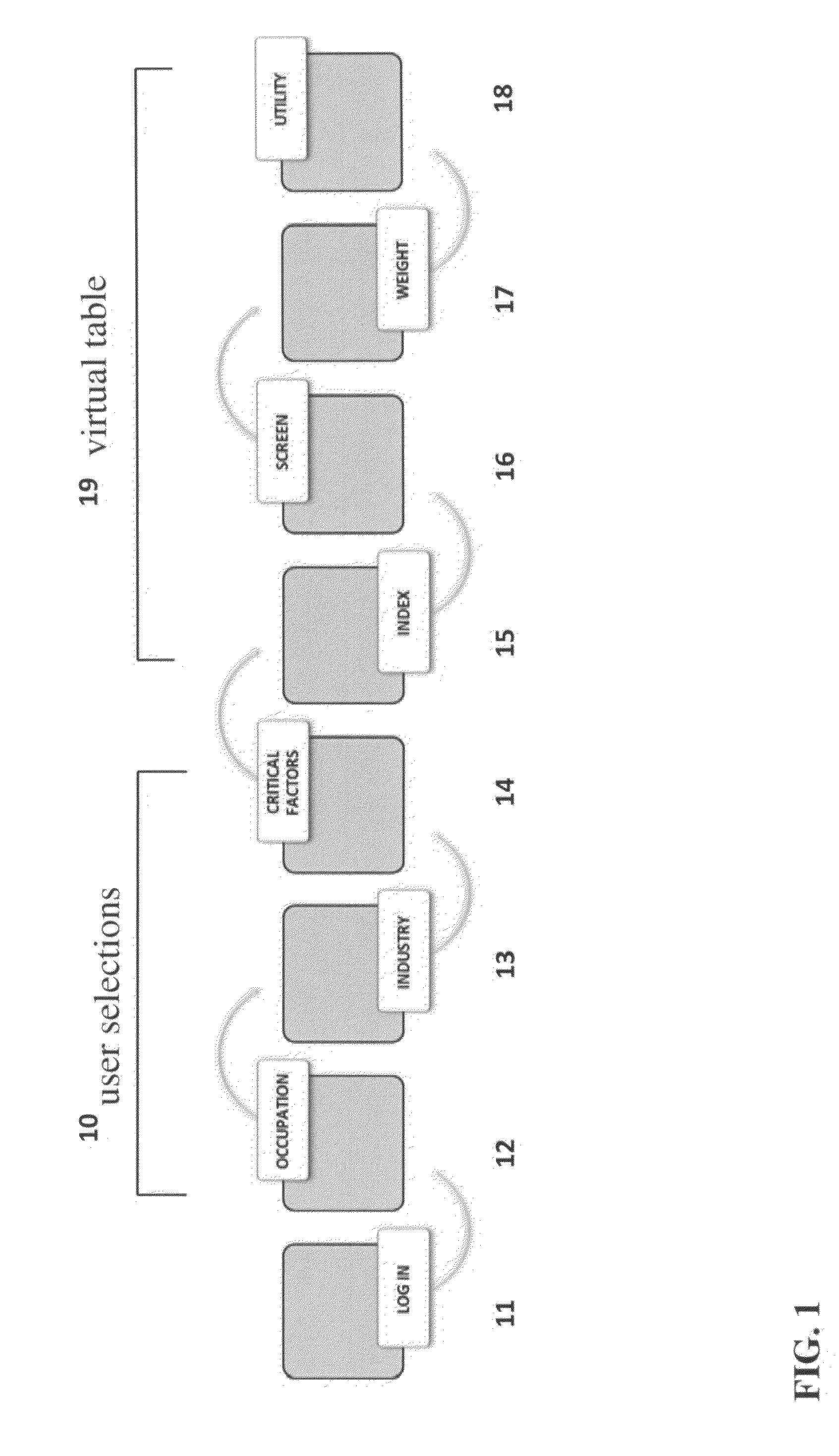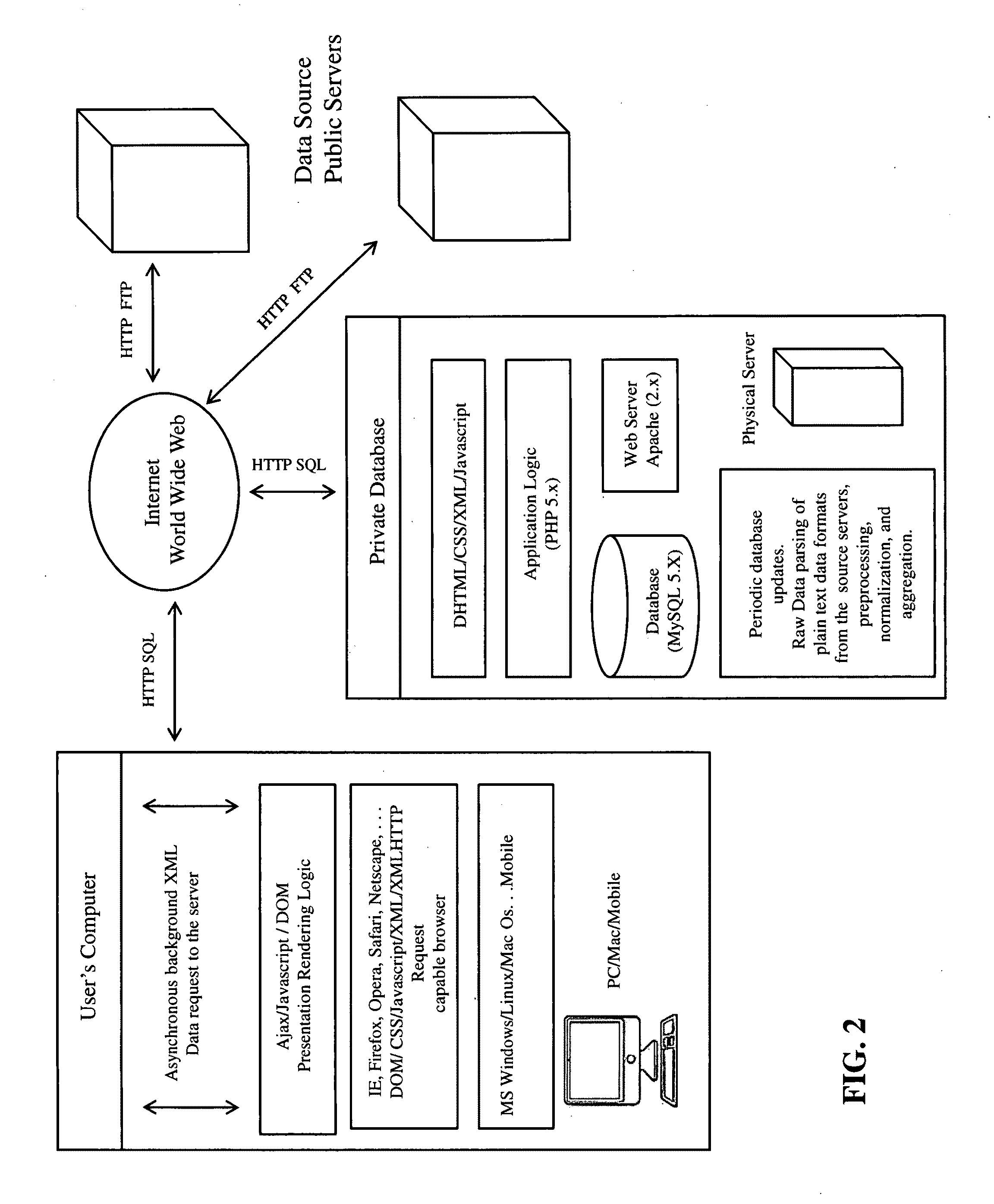Method and system for informed decision making to locate a workforce
a technology of workforce and computer implementation, applied in the field of computer implementation of method and system for informed decision making, can solve the problems of affecting workforce decisions, and affecting the ability of businesses to make informed decisions. it can solve the problem of poor analysis of industry and occupational variables, affecting workforce decisions, and affecting workforce decisions. it can save thousands, even hundreds of thousands of dollars, and achieve the effect of supporting workforce decisions
- Summary
- Abstract
- Description
- Claims
- Application Information
AI Technical Summary
Benefits of technology
Problems solved by technology
Method used
Image
Examples
example business
[0047 sectors may include without limitation: Forestry, Fishing, Hunting, and Agriculture Support, Mining, Utilities, Construction, Manufacturing, Wholesale Trade, Retail Trade, Transportation and Warehousing, Information, Finance and Insurance, Real Estate and Rental and Leasing, Professional, Scientific, and Technical Services, Management of Companies and Enterprises, Administrative and Support and Waste Management and Remediation Services, Educational Services, Health Care and Social Assistance, Arts, Entertainment, and Recreation, Accommodation and Food Services, Other Services (except Public Administration), and Unclassified.
[0048]The term “SOC” generally refers to Standard Occupational Classification. The SOC system is used by federal statistical agencies to classify workers into occupational categories for the purpose of collecting, calculating, or disseminating data. All workers are classified into one of over 820 occupations according to their occupational definition. To fa...
PUM
 Login to View More
Login to View More Abstract
Description
Claims
Application Information
 Login to View More
Login to View More - R&D
- Intellectual Property
- Life Sciences
- Materials
- Tech Scout
- Unparalleled Data Quality
- Higher Quality Content
- 60% Fewer Hallucinations
Browse by: Latest US Patents, China's latest patents, Technical Efficacy Thesaurus, Application Domain, Technology Topic, Popular Technical Reports.
© 2025 PatSnap. All rights reserved.Legal|Privacy policy|Modern Slavery Act Transparency Statement|Sitemap|About US| Contact US: help@patsnap.com



